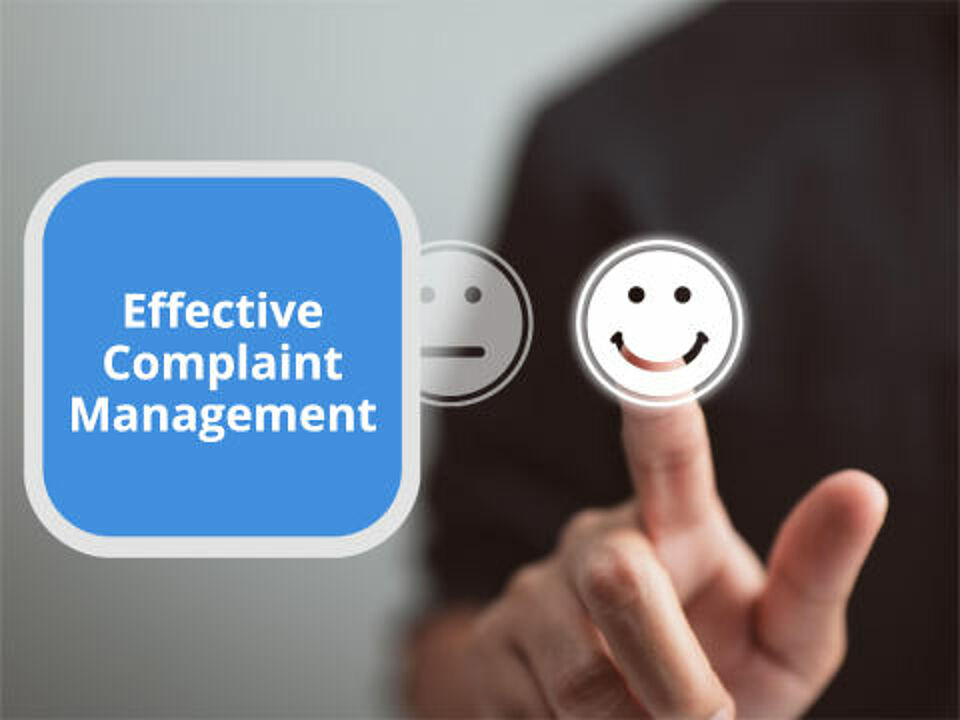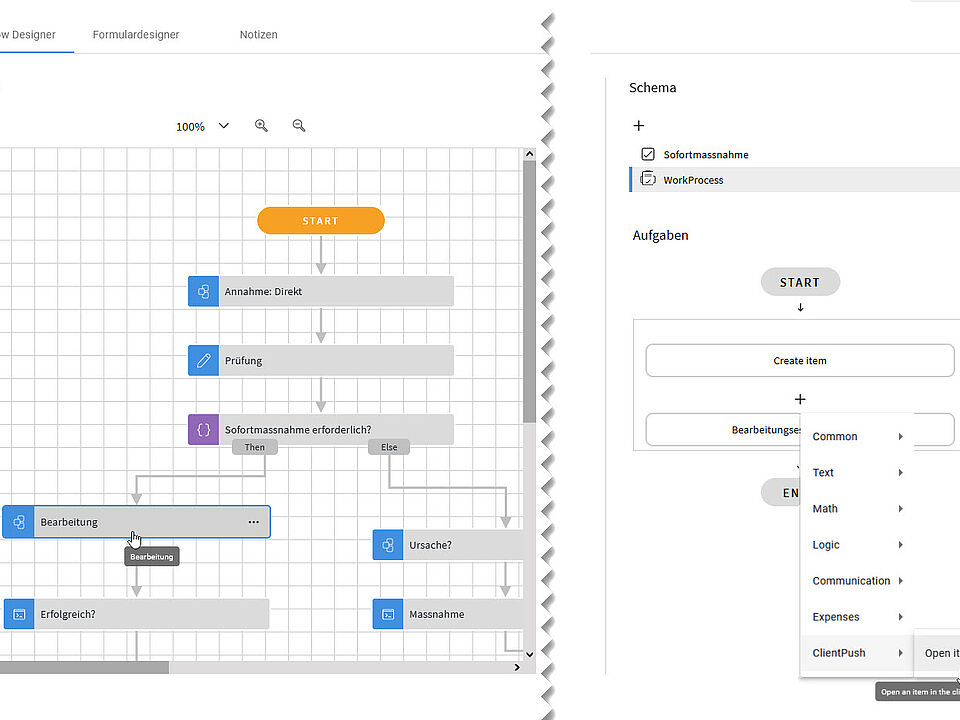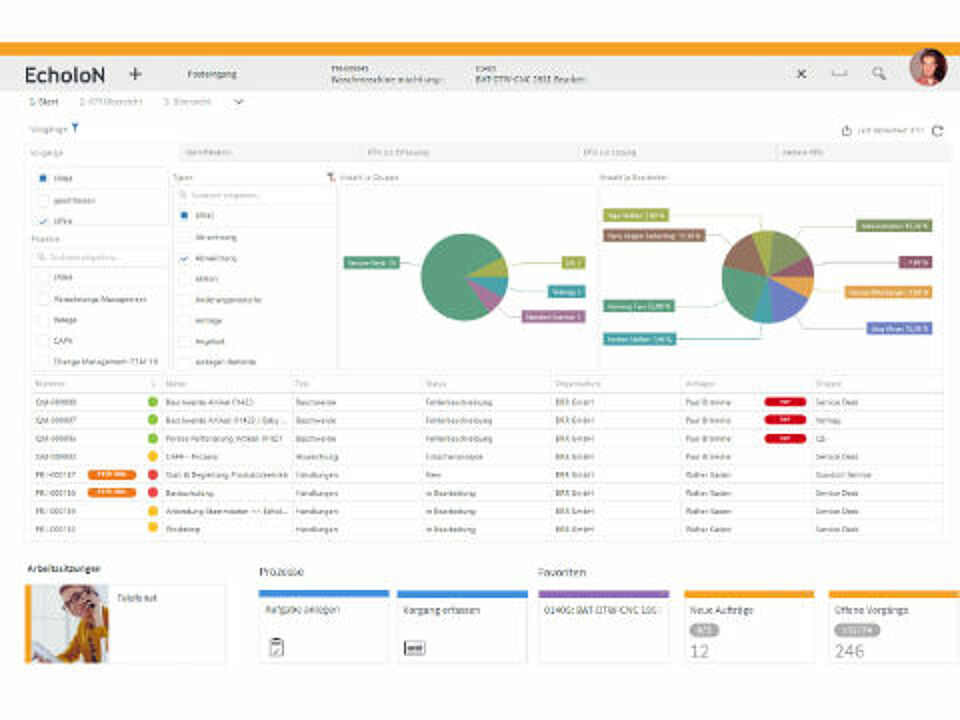Complaint management: definition, goals and process
Learn in our blog how complaint management is systematically used to stabilise customer relations and quality assurance.

Author: Jochen Möller (Managing Director and CoFounder of EcholoN)
creation: 29.06.2023, last change: 19.02.2025
Anyone who has a problem wants to be heard - otherwise they turn away. This applies to interpersonal relationships as well as to the bond between people and companies. The consequences can be customer churn, declining sales and a loss of brand prestige. Systematic and effective complaint management is crucial here. It should also be integrated into the broader strategies of quality management. But what exactly is complaint management? And how can you do it most effectively?
In this article we will explain the concept of complaint management, explain its goals and tasks, and take a closer look at the complaint management process.
What is complaint management?
Complaint management refers to the systematic process of dealing with and handling dissatisfied customer complaints. It ensures that customer complaints are effectively recorded, analysed and resolved in order to improve customer service and satisfaction and build long-term customer loyalty.
Goals of complaint management
The complaint management process has several objectives, including:
Complaint handling
Complaint management aims to handle customer complaints in a professional and timely manner. This includes recording the complaint, investigating the case, finding solutions and communicating the actions taken to the customer. Effective complaint handling is critical to restoring the customer's trust and satisfying them.
Customer loyalty
Complaint management also serves to build customer loyalty. By handling complaints in a professional and satisfactory manner, companies can gain the trust of customers and strengthen customer loyalty. By showing that their complaints are taken seriously and resolved appropriately, customers feel valued and are more likely to continue doing business with the company.
Quality assurance
Another goal of complaint management is to improve the quality of products or services. By analysing complaints, companies can identify patterns and adjust internal processes to avoid future problems. This proactive approach to quality assurance helps companies to continuously improve their services and increase customer satisfaction.
The standard requirements for complaint management are set out in DIN ISO 10002:2010-05. It provides a cool overview of the most important terms and principles of complaint management. It explains what needs to be considered, which tasks are important and offers practical tools for doing so. Basically, it shows what you should be able to do internationally to manage complaints well.

Process - Complaint Management Procedure
The complaint management process can be divided into two main categories: direct complaint management and indirect complaint management.
Direct complaint management
Direct complaint management refers to the handling of complaints that are addressed directly to the company. It comprises different phases:
-
Stimulation
1
Complaint stimulation
The first step is complaint stimulation. This means that companies must ensure that customers have no hurdles to express their complaints. Different channels such as telephone, email, online forms or face-to-face meetings can be offered to give customers the opportunity to voice their complaints in an easy way.
-
Acceptance
2
Complaint acceptance
After stimulating the complaint, companies need to ensure that their customer complaints are effectively recorded. This includes establishing a clearly defined point of contact and training staff to receive and document complaints. Simple and structured recording of the complaint is important to ensure that no important information is lost.
-
Editing
3
Complaint handling
Once the complaint has been recorded, companies must analyse the complaint and take appropriate action to resolve the issue. This may require an internal investigation to understand the reasons for the complaint and take appropriate action to prevent similar incidents in the future.
-
Response
4
Complaint response
The final stage of direct complaint handling is to provide the customer with an appropriate and satisfactory response to their complaint. This may take the form of apology letters, refunds, credit notes or other appropriate compensation. It is important that companies show that they take the complaint seriously and are willing to resolve the problem and restore customer satisfaction.
Indirect complaint management
Indirect complaint management refers to the evaluation of complaint information that reaches the company indirectly. This can be done through online reviews, social media, customer surveys or market research. Indirect complaint management is just as important as direct complaint management, as it provides valuable information about customer satisfaction and possible opportunities for improvement.
-
Reporting
1
Reporting - Complaint evaluation
The evaluation of complaint information is an important step. Companies need to analyse the information received to identify patterns or recurring problems. This may involve quantitative or qualitative methods of analysis to extract the relevant information and provide meaningful insights.
-
Controlling
2
Complaint Management Controlling
Complaint management controlling refers to the monitoring and control of the complaint management process. Companies should establish clear responsibilities to ensure that complaints are handled efficiently. Certain key figures and measures are required to evaluate the performance of complaint management.
-
Complaint reporting
3
Complaint reporting
The collection and documentation of complaint information is an essential part of indirect complaint management. Companies should be able to produce detailed complaint reports to provide a comprehensive overview of complaints voiced, actions taken and information gained.
-
Use
4
Using the complaint information
The last step is to use the information from the complaints for improvement measures. Companies can use the insights gained to improve their products or services in a targeted way and achieve higher customer satisfaction.
Difference between complaint and reclamation
It is important to understand the difference between a complaint and a grievance, as the two terms are often used interchangeably but have different meanings.
A complaint is a general expression of dissatisfaction about a product, service or process. It can be about problems such as poor customer service, long waiting times or poor product quality. A complaint can be made verbally or in writing.
A complaint, on the other hand, is more specific and refers to the customer's claim for a correction or compensation for a defective product or service. A complaint is usually filed when a product does not meet the expected standards or a defect has occurred that affects the proper use of the product.
Successful complaint management through training
To maintain and improve customer satisfaction, it is essential that all employees who have contact with customers demonstrate a high level of service orientation and empathy. For this reason, appropriate training is an important component of complaint management. In these trainings, employees learn how to react adequately to customer complaints in order to win the customer back for the company and strengthen customer loyalty.
What are the complaint channels?
There are different complaint channels, which can vary depending on the type of complaint and the organisation involved. Some common complaint channels are:
- Telephone hotlines: many companies and organisations have set up special telephone numbers where customers can report their complaints by telephone.
- Written complaints by post or email: Customers can send their complaints in writing by post or email to the relevant company or organisation.
- Online complaint portals: Many companies offer online complaint portals on their website where customers can submit their complaints efficiently and quickly.
- Social media: Customers can submit their complaints to companies or organisations via social media such as Twitter or Facebook. Companies often use dedicated accounts or hashtags to track and respond to complaints.
- Personal complaints: In some cases, it may be necessary to go in person to a branch or customer service centre to voice a complaint.
Companies should offer their customers different ways to contact them. In today's digital world, chat or social media channels are becoming more and more important.
Digital tools in complaint management
In the digital era, customers' expectations of complaint management have increased. They want to be able to communicate quickly, easily and seamlessly, regardless of which channel they use to contact a company. To meet these expectations and to ensure efficient handling of customer complaints, various digital tools can be used.
A ticket system, for example, is helpful. When a customer submits a complaint, a ticket is automatically generated from it. Each ticket is given a unique number that is traceable for both the company and the customer. With the help of such a system, the processing of the complaint can be organised transparently and efficiently. Modern complaint management offers the customer a service portal for communication and traceability.
In addition to a ticket system, a CRM (Customer Relationship Management) system can also be of great help in complaint management. A CRM system makes it possible to store customer information centrally and to document all interactions with the customer. This creates a comprehensive overview of the customer history and facilitates the processing of the complaint.
Chatbots and AI-based systems can also contribute to efficient complaint management. They are able to answer simple queries and, if necessary, forward them to the appropriate contact person. In this way, they can help to increase customer satisfaction.
General conditions of complaint management
Successful complaint management requires certain framework conditions:
Quality management: Complaint management is closely linked to quality management. Companies should ensure that their products and services meet the required quality standards in order to reduce complaints.
Customer loyalty: Complaint management as an essential component. Companies should ensure that customer complaints are seen as valuable feedback and that appropriate measures are taken to retain customers and ensure their satisfaction.
Active complaint management: Companies should engage in active complaint management by proactively addressing customer complaints and taking action to resolve issues before they become major conflicts.
Professional complaint management: Companies should have trained staff responsible for complaint management. These staff should have the necessary skills and knowledge to handle complaints appropriately and professionally.
Evidence controlling: Companies should conduct evidence-based controlling to evaluate the effectiveness of their complaint management. This includes the collection and analysis of relevant data to make improvements and increase customer satisfaction.
Task controlling: Companies should establish clear responsibilities to ensure that complaints are handled efficiently. Each employee should know which tasks he or she has to take on in the context of complaint management.
Cost-benefit controlling: Companies should evaluate the costs and benefits of complaint management. This includes analysing the costs of complaint handling as well as the benefits in terms of customer satisfaction, customer loyalty and quality assurance.
In order to implement adequate complaint management, companies should observe the described framework conditions and ensure that their processes and employees are aligned with the needs of the customers.
Overall, complaint management plays an important role in improving customer satisfaction, customer loyalty and quality improvement. It helps companies identify dissatisfied customers and solve their problems in order to build long-term customer relationships. A professional and systematic approach to complaint management is crucial to achieve the desired results.
Conclusion:
Good complaint management is a crucial factor for business success and contributes significantly to customer loyalty. It helps to identify potential for improvement and offers the chance to win back dissatisfied customers. With the tips presented in this article, you should have a good foundation for establishing or optimising your own complaint management. Companies that rely on effective complaint management are well equipped to meet the challenges of customer care.
Successful complaint management is an ongoing process
Successful complaint management is not a one-off project, but an ongoing process. It requires regular monitoring and constant optimisation. Companies should therefore constantly check whether their complaint management processes are still up-to-date and customer-centred and make adjustments if necessary.

Complaint management with EcholoN as a central platform
EcholoN supports complaint management by providing a central platform for managing complaints and their processing. It enables companies to efficiently record, categorise, manage and analyse complaints.
The software offers various functions such as the recording of complaints via different channels such as telephone, email or social media. These complaints are automatically initiated into the system and can then be handled by the relevant staff.
EcholoN also offers functions for escalating complaints to ensure that particularly urgent or serious complaints are dealt with appropriately. It also allows complaints to be linked to specific customers, products or services to identify trends and patterns.
In addition, EcholoN offers a comprehensive reporting function that allows companies to monitor the performance of their complaint management. This includes KPIs such as the number of complaints received, handling times and customer satisfaction.
Overall, EcholoN supports complaint management through automation, deployment as a central tool and analytics to help companies efficiently handle complaints and gain key insights from them.
Frequently asked questions - FAQs
What is complaint management?
Complaint management refers to the process of receiving, handling and resolving complaints and grievances from customers to ensure customer satisfaction and strengthen customer loyalty.
What are the objectives of complaint management?
The objectives of complaint management are to effectively handle customer complaints, create a positive customer relationship, improve product and service quality, increase customer satisfaction and increase customer loyalty.
How does complaint management work?
Complaint management includes the process of accepting complaints, reviewing them, prioritising their handling, communicating with the customer, finding solutions and taking measures to prevent future complaints.
What role does the DIN ISO standard play in complaint management?
The DIN ISO standard 10002 is a guideline for the implementation of an effective complaint management system. It contains requirements and recommendations for the organisation, implementation and improvement of complaint management.
What are the advantages of a professional complaint management standard?
By implementing a complaint management standard, companies can standardise their processes, improve customer satisfaction, strengthen customer loyalty, reduce error resolution time and increase the quality of their products and services.
Why is good complaint management important?
Good complaint management is important to take customer complaints seriously, listen to customer concerns, provide satisfactory solutions, maintain customer relationships, build customer loyalty and improve the company's image.
What role does complaint management play in quality assurance?
Complaint management plays an important role in quality assurance as it enables companies to identify errors and defects, make improvements, maintain quality standards and ensure customer satisfaction.
How can a company implement a successful complaint management system?
A company can implement a successful complaint management system by providing clear complaint channels for customers, handling complaints quickly and professionally, using feedback to make improvements and having an active complaint management team.
What role does complaint management play in customer retention?
Effective complaint management helps resolve customer complaints quickly and satisfactorily, which in turn contributes to customer satisfaction and strengthens customer loyalty. Customers who feel well taken care of are more likely to remain loyal to the company.
What are the characteristics of an efficient complaint management?
Efficient complaint management is characterised by quick response times, appropriate solutions, professional communication, proactive measures to prevent complaints and the possibility for customers to give feedback and make suggestions for improvement.
EcholoN for:
- Software for customer service & customer support and after sales
- Software for quality management, quality assurance and control
